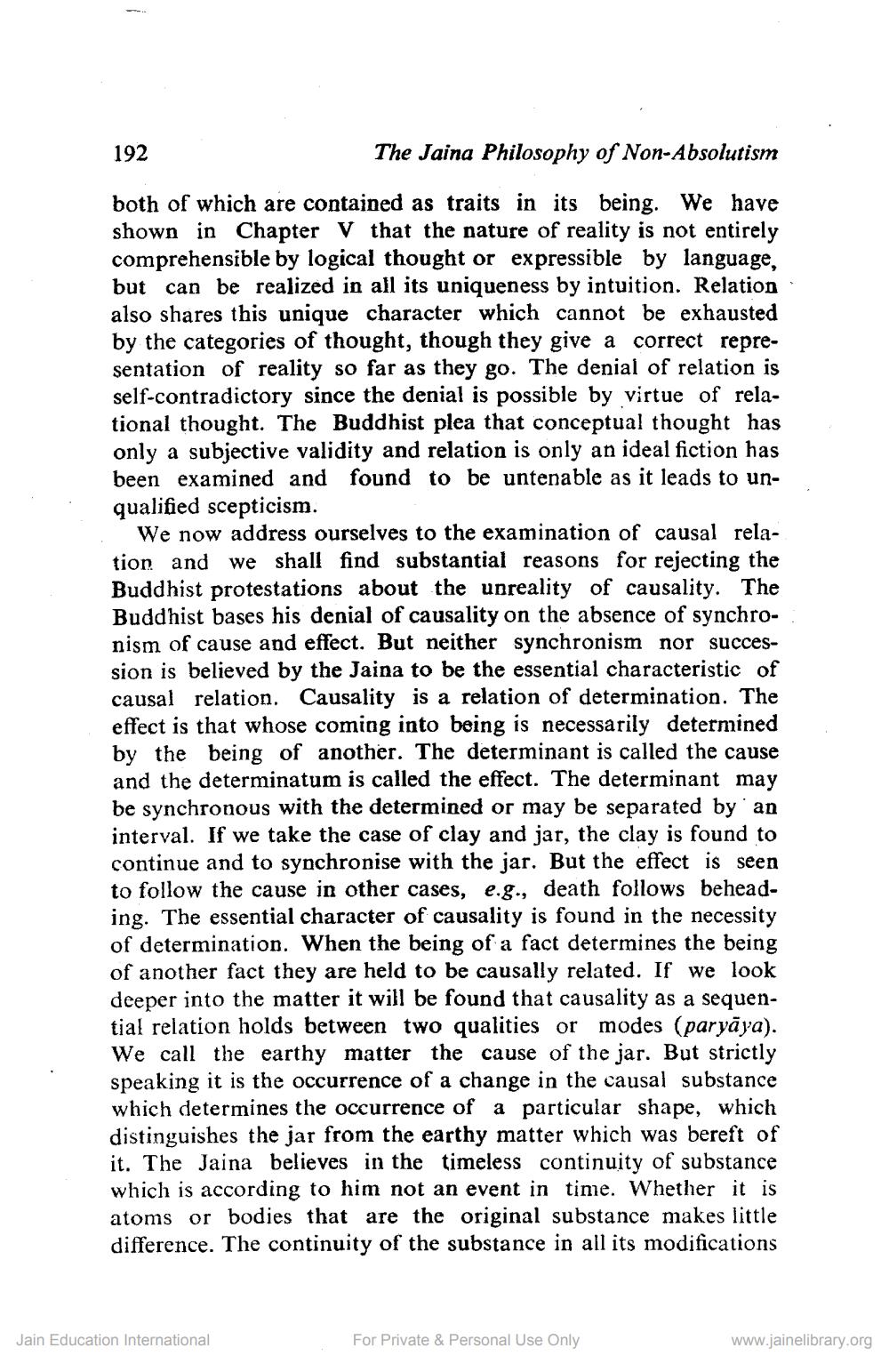________________
!
The Jaina Philosophy of Non-Absolutism
both of which are contained as traits in its being. We have shown in Chapter V that the nature of reality is not entirely comprehensible by logical thought or expressible by language, but can be realized in all its uniqueness by intuition. Relation also shares this unique character which cannot be exhausted by the categories of thought, though they give a correct representation of reality so far as they go. The denial of relation is self-contradictory since the denial is possible by virtue of relational thought. The Buddhist plea that conceptual thought has only a subjective validity and relation is only an ideal fiction has been examined and found to be untenable as it leads to unqualified scepticism.
We now address ourselves to the examination of causal relation and we shall find substantial reasons for rejecting the Buddhist protestations about the unreality of causality. The Buddhist bases his denial of causality on the absence of synchronism of cause and effect. But neither synchronism nor succession is believed by the Jaina to be the essential characteristic of causal relation. Causality is a relation of determination. The effect is that whose coming into being is necessarily determined by the being of another. The determinant is called the cause and the determinatum is called the effect. The determinant may be synchronous with the determined or may be separated by an interval. If we take the case of clay and jar, the clay is found to continue and to synchronise with the jar. But the effect is seen to follow the cause in other cases, e.g., death follows beheading. The essential character of causality is found in the necessity of determination. When the being of a fact determines the being of another fact they are held to be causally related. If we look deeper into the matter it will be found that causality as a sequential relation holds between two qualities or modes (paryāya). We call the earthy matter the cause of the jar. But strictly speaking it is the occurrence of a change in the causal substance which determines the occurrence of a particular shape, which distinguishes the jar from the earthy matter which was bereft of it. The Jaina believes in the timeless continuity of substance which is according to him not an event in time. Whether it is atoms or bodies that are the original substance makes little difference. The continuity of the substance in all its modifications
192
Jain Education International
For Private & Personal Use Only
www.jainelibrary.org




